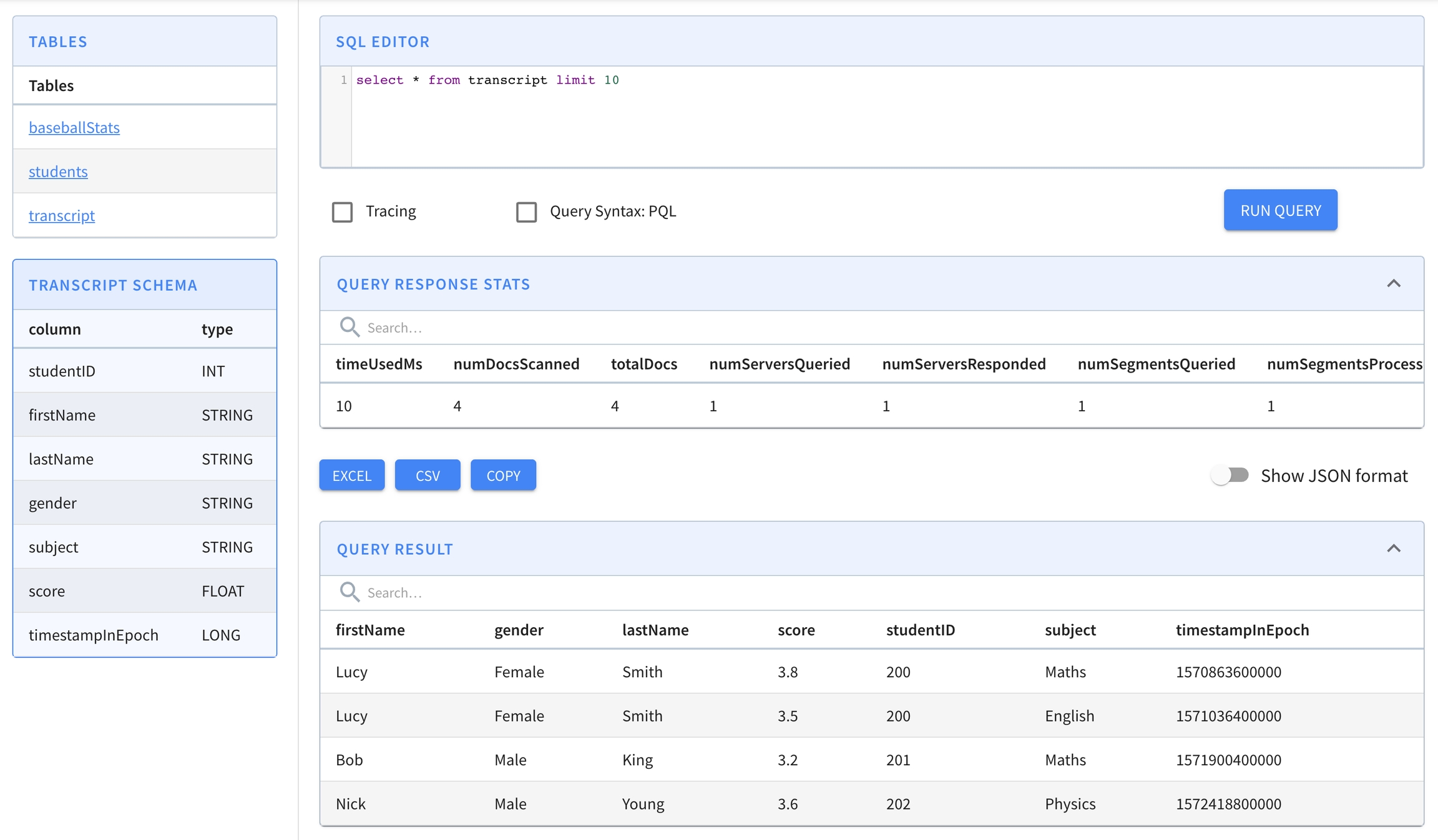Stream ingestion example
The Docker instructions on this page are still WIP
This example assumes you have set up your cluster using Pinot in Docker.
Data Stream
First, we need to set up a stream. Pinot has out-of-the-box real-time ingestion support for Kafka. Other streams can be plugged in for use, see Pluggable Streams.
Let's set up a demo Kafka cluster locally, and create a sample topic transcript-topic.
Start Kafka
docker run \
--network pinot-demo --name=kafka \
-e KAFKA_ZOOKEEPER_CONNECT=manual-zookeeper:2181/kafka \
-e KAFKA_BROKER_ID=0 \
-e KAFKA_ADVERTISED_HOST_NAME=kafka \
-d bitnami/kafka:latestCreate a Kafka Topic
docker exec \
-t kafka \
/opt/kafka/bin/kafka-topics.sh \
--zookeeper manual-zookeeper:2181/kafka \
--partitions=1 --replication-factor=1 \
--create --topic transcript-topicStart Kafka
Start Kafka cluster on port 9876 using the same Zookeeper from the quick-start examples.
bin/pinot-admin.sh StartKafka -zkAddress=localhost:2123/kafka -port 9876Create a Kafka topic
Download the latest Kafka. Create a topic.
bin/kafka-topics.sh --create --bootstrap-server localhost:9876 --replication-factor 1 --partitions 1 --topic transcript-topicCreating a schema
If you followed Batch upload sample data, you have already pushed a schema for your sample table. If not, see Creating a schema to learn how to create a schema for your sample data.
Creating a table configuration
If you followed Batch upload sample data, you pushed an offline table and schema. To create a real-time table configuration for the sample use this table configuration for the transcript table. For a more detailed overview about table, see Table.
Uploading your schema and table configuration
Next, upload the table and schema to the cluster. As soon as the real-time table is created, it will begin ingesting from the Kafka topic.
Loading sample data into stream
Use the following sample JSON file for transcript table data in the following step.
Push the sample JSON file into the Kafka topic, using the Kafka script from the Kafka download.
Ingesting streaming data
As soon as data flows into the stream, the Pinot table will consume it and it will be ready for querying. Browse to the Query Console running in your Pinot instance (we use localhost in this link as an example) to examine the real-time data.

Was this helpful?

